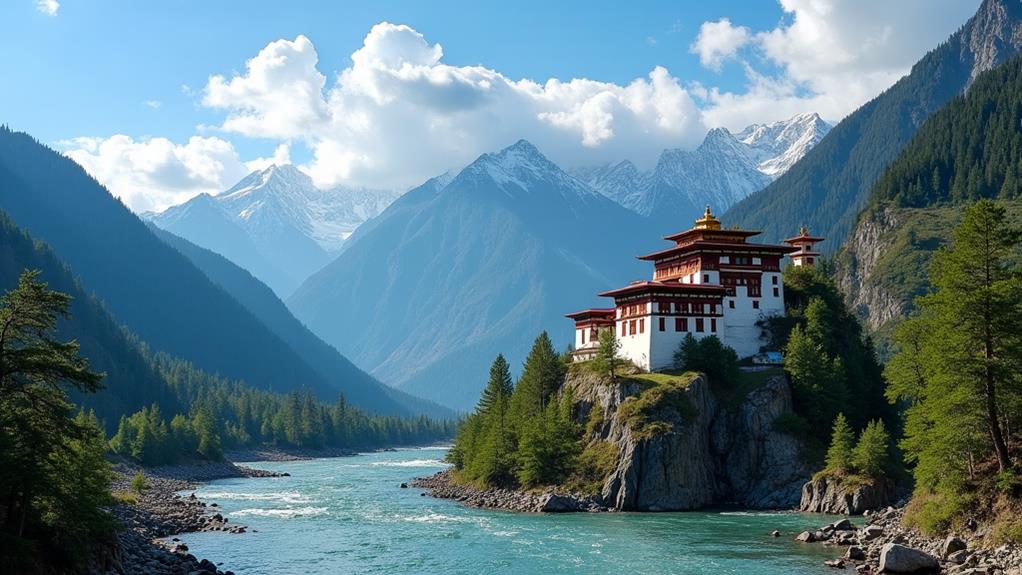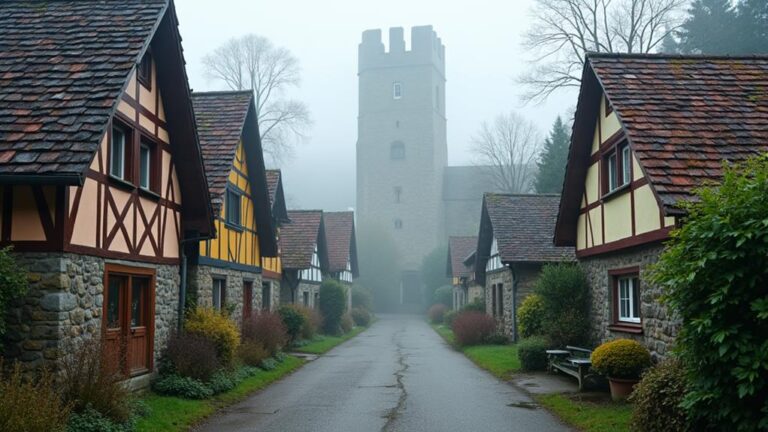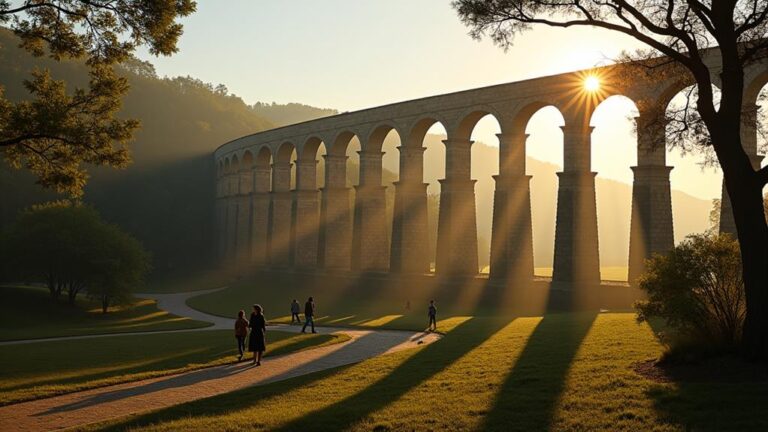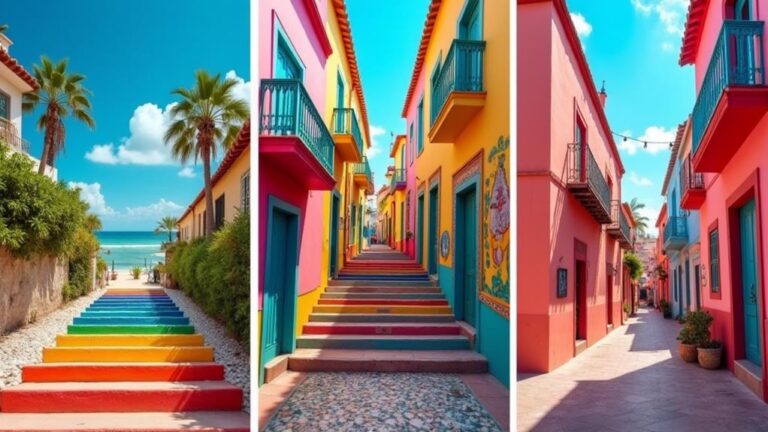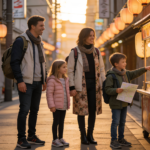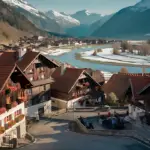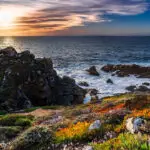You're planning a trip to Bhutan, a country steeped in tradition and natural beauty. As you start to research, you'll likely come across a mix of cultural attractions, outdoor activities, and breathtaking landscapes. But what are the absolute must-do's in this enchanting land? From exploring Thimphu City to hiking to the iconic Tiger's Nest, there are numerous experiences waiting for you. But will you prioritize trekking through Paro Valley or attending a festival to witness the country's rich heritage? The choices are endless, and it's time to narrow them down – but where do you even start?
Contents
Key Takeaways
- Explore Thimphu City, discovering traditional and modern culture, historic landmarks, and vibrant markets.
- Hike to Tiger's Nest, an unforgettable experience offering breathtaking views and insight into Bhutan's natural beauty.
- Attend a festival, immersing yourself in Bhutan's rich heritage, colorful celebrations, and unique cultural traditions.
- Visit Punakha Dzong, a fortress steeped in history, showcasing unique Dzong architecture and Buddhist influences.
- Go rafting in Punakha, experiencing breathtaking scenery and thrilling rapids amidst Bhutan's stunning natural landscape.
Explore Thimphu City
As you step into Thimphu City, the capital of Bhutan, you're immediately immersed in a unique blend of traditional and modern culture.
You'll witness the city's cultural heritage through its stunning architecture and vibrant streets. Visit the iconic Buddha Point, a massive 51.5-meter-tall bronze statue that's a prominent city landmark.
From there, take a short walk to the nearby Kuensel Phodrang Nature Park, which offers breathtaking views of the city.
You'll also want to explore the National Memorial Chorten, a revered monument that honors the country's third king.
Its whitewashed walls and golden spires create a striking contrast against the city's urban landscape. Next, head to the vibrant Changangkha Lhakhang, a 12th-century temple perched on a hill overlooking the city.
Its colorful murals and frescoes showcase Bhutan's rich cultural heritage.
Thimphu's city landmarks are a legacy to the country's commitment to preserving its unique culture and traditions.
As you wander through the city's bustling streets, you'll discover a mix of old and new, from ancient temples to modern cafes and shops.
Hike to Tiger's Nest
With Thimphu City's rich cultural heritage still fresh in your mind, you're now ready to escape the urban landscape and immerse yourself in Bhutan's stunning natural beauty.
The hike to Tiger's Nest, also known as Paro Taktsang, is an experience you won't soon forget. This iconic monastery is perched on a cliff, 10,000 feet above sea level, in a tiger habitat that's steeped in legend.
As you hike, consider the following:
- Respect the land: Remember to tread carefully and respectfully, as the trail winds through a pristine forest ecosystem.
- Listen to Monk stories: Take time to chat with the monks who live and work at Tiger's Nest – they're enthusiastic to share stories of the monastery's rich history.
- Bring your camera: The views from the top are breathtaking – be sure to capture them on film.
- Pack a snack: The hike can be challenging, so bring some energy-boosting snacks to keep you going.
The hike to Tiger's Nest is a challenging but rewarding experience that will leave you with unforgettable memories of Bhutan's natural beauty.
Visit Punakha Dzong
What lies beyond the lush forests and majestic mountains of Bhutan?
As you explore the heart of the country, you'll discover the magnificent Punakha Dzong, a fortress that's steeped in history and showcases the unique Dzong architecture of Bhutan.
Located at the confluence of the Pho Chhu and Mo Chhu rivers, this stunning structure is a must-visit.
Punakha Dzong, also known as Pungthang Dechen Photrang Dzong, is the administrative and spiritual center of the Punakha district.
It was built in 1637 by Zhabdrung Ngawang Namgyal, the unifier of Bhutan, and has played a significant role in the country's history.
The Dzong's architecture is a blend of traditional Bhutanese design and Buddhist influences, with its imposing whitewashed walls, intricately carved wooden beams, and vibrant frescoes.
As you wander through the Dzong's courtyards and chapels, you'll discover ancient artifacts, sacred relics, and beautiful murals that depict the history of Punakha.
With its rich cultural heritage and stunning natural surroundings, Punakha Dzong is a truly unforgettable experience that will leave you in awe of Bhutan's unique culture and traditions.
Trek to Paro Valley
Leaving the magnificent Punakha Dzong behind, you'll set your sights on the picturesque Paro Valley, a scenic trek that will take you through lush forests, traditional villages, and stunning landscapes.
The trek is a great way to experience the natural beauty and tranquility of Bhutan, allowing you to immerse yourself in the country's unique culture and breathtaking valley scenery.
- Majestic Mountain Views: You'll be surrounded by towering mountains, including the iconic Chomolhari, which offers breathtaking views and photo opportunities.
- Traditional Villages: You'll pass through quaint villages, where you can experience the warm Paro hospitality and see traditional Bhutanese architecture.
- Lush Forests: The trek takes you through lush forests, where you can spot a variety of flora and fauna, including rare bird species.
- Historic Landmarks: You'll visit historic landmarks, such as ancient monasteries and temples, which offer a glimpse into Bhutan's rich history and culture.
Attend a Festival
In the heart of Bhutan's vibrant culture, festivals play a significant role in bringing people together and showcasing the country's rich heritage.
You'll experience the unique festival atmosphere as you join locals in their colorful and lively celebrations. From the masked dances to the traditional music, every aspect of a Bhutanese festival is steeped in cultural significance.
As you attend a festival, you'll witness the country's history, myths, and legends come alive through the performances.
You'll see locals dressed in their finest attire, adorned with traditional jewelry and ornaments. The air is filled with the scent of incense and the sound of chanting, creating an enchanting atmosphere.
The festivals are an integral part of Bhutan's cultural identity, and attending one will give you a deeper understanding of the country's values and traditions.
You'll have the opportunity to interact with locals, try traditional foods, and take part in the celebrations. Whether it's the Paro Tshechu or the Thimphu Tshechu, attending a festival is an unforgettable experience that will leave you with lifelong memories of Bhutan's unique culture.
Discover Vientiane Markets
You won't find Vientiane Markets in Bhutan, as Vientiane is the capital of Laos, but if you're looking for a similar experience in Bhutan, you can explore the local markets in Thimphu.
As you walk through the stalls, you'll see an array of local produce on display, showcasing the country's rich agricultural heritage.
Shopping at night markets, like the one in Paro, is also a great way to experience the sights and sounds of Bhutan's vibrant market scene.
Shopping at Night Market
As night falls, the streets of Thimphu transform into a vibrant spectacle at the weekend night market.
You'll discover a treasure trove of nighttime souvenirs, each one uniquely Bhutanese.
The night market, also known as the weekend market, is a great place to find authentic crafts that make perfect gifts or mementos.
- Handmade textiles: Beautifully crafted kiras, ghos, and scarves made from the finest Bhutanese wool and silk.
- Local jewelry: Intricately designed earrings, necklaces, and bangles that reflect Bhutanese culture and craftsmanship.
- Wooden handicrafts: Exquisitely crafted wooden masks, figurines, and decorative items that showcase Bhutanese artistry.
- Traditional Bhutanese art: Paintings, thangkas, and other forms of traditional Bhutanese art that make for unique and meaningful souvenirs.
As you wander through the night market, you'll be surrounded by the sights, sounds, and smells of Bhutanese culture.
It's the perfect place to pick up some authentic souvenirs and experience the local way of life.
Local Produce on Display
Shopping for local handicrafts is just one part of the Bhutanese experience – the country's vibrant produce markets offer a different yet equally enchanting taste of the local culture. As you wander through the markets, you'll be greeted by the vibrant colors and enticing aromas of fresh fruits and vegetables. Local artisans take pride in showcasing their farm-fresh produce, carefully arranging it in an eye-catching display.
| Local Produce | Best Time to Buy |
|---|---|
| Apples | October to December |
| Oranges | January to March |
| Asparagus | February to May |
| Strawberries | April to June |
| Plums | July to September |
You'll also find local artisans selling homemade products like jams, honey, and spices. Be sure to try some of the local delicacies, such as the famous Bhutanese chili peppers. As you explore the markets, you'll get a glimpse into the daily lives of the Bhutanese people and their deep connection with nature. The vibrant atmosphere and the chance to support local farmers make the produce markets a must-visit destination in Bhutan.
Drive to Dochula Pass
As you drive to Dochula Pass, you'll be greeted by breathtaking panoramic mountain views that will leave you in awe of Bhutan's natural beauty.
Along the way, you'll pass by historical monuments that offer a glimpse into the country's rich cultural heritage.
With an elevation of over 3,100 meters, Dochula Pass is a must-visit destination for anyone looking to experience the best of Bhutan's scenery and history.
Panoramic Mountain Views
Perched at 3,100 meters above sea level, Dochula Pass offers you the perfect vantage point to take in breathtaking panoramic views of the Himalayan mountain range.
As you drive up to the pass, the scenery unfolds dramatically, with lush forests giving way to towering mountain vistas.
On a clear day, you can see for miles in every direction, taking in the majestic mountain peaks and scenic trails that wind their way through the valleys below.
Here are a few highlights to look out for:
- Mountain vistas: Take in the breathtaking views of the Himalayas, with towering peaks stretching out as far as the eye can see.
- Scenic trails: Look out for the winding trails that crisscross the mountains, offering a glimpse into the lives of the people who call this region home.
- Dochula's prayer flags: Note the colorful prayer flags that dot the landscape, adding a pop of color to the stunning scenery.
- Wildlife spotting: Keep your eyes peeled for the wildlife that calls this region home, including yak, deer, and even the occasional snow leopard.
Historical Monuments Nearby
Historical Monuments Nearby
Beyond the breathtaking vistas of Dochula Pass lies a rich tapestry of historical monuments that showcase Bhutan's unique cultural heritage. As you drive to Dochula Pass, you'll have the opportunity to explore these ancient ruins and historical landmarks. From the 108 memorial chortens to the mysterious ruins of the ancient Drukgyal Dzong, you'll be immersed in the country's fascinating history.
| Historical Monuments | Description |
|---|---|
| Drukgyal Dzong | Ancient fortress ruin with stunning views of the valley |
| 108 Memorial Chortens | Colorful chortens built in honor of the Bhutanese soldiers who died in battle |
| Lamperi Chorten | A stunning example of Bhutanese architecture and artistry |
| Lungchutse Lhakhang | A sacred temple perched on a hill overlooking the valley |
| Kurje Lhakhang | A historic temple that houses ancient relics and artifacts |
As you visit these historical monuments, you'll gain a deeper understanding of Bhutan's rich history and unique cultural heritage. The ancient ruins and historical landmarks offer a glimpse into the country's fascinating past, and the stunning natural beauty of the surrounding landscape only adds to the experience.
Visit Buddha Dordenma
You'll find one of Bhutan's most iconic landmarks in the Kuensel Phodrang Nature Park, a massive 54-meter-tall bronze statue of Buddha Dordenma.
This majestic Buddha's statue is one of the largest in the world, glistening in the sun and radiating serenity.
As you approach the statue, you'll notice the intricate details and the vibrant colors that adorn it.
- Respect the surroundings: Remember to dress modestly and remove your shoes before entering the temple complex.
- Learn about Buddha's teachings: Take a moment to appreciate the significance of the statue and the role it plays in Bhutanese culture.
- Take in the views: The statue offers breathtaking views of the valley below, making it a perfect spot for photography.
- Explore the temple complex: Discover the numerous chapels, shrines, and statues that surround the main Buddha's statue, each with its own unique story to tell.
Take a Hot Spring Bath
After immersing yourself in the tranquility of Buddha Dordenma, it's time to rejuvenate your body and mind with a traditional hot spring bath.
Soaking in a natural hot spring is a centuries-old tradition in Bhutan, and it's not just a relaxing experience, but also a culturally significant one.
You'll find numerous hot springs throughout the country, each with its own unique charm and therapeutic properties.
As you soak in the warm waters, you'll feel your muscles relax, and your mind unwind.
The relaxation benefits of a hot spring bath are undeniable, and it's an excellent way to rejuvenate your body and mind after a long day of exploring.
In Bhutan, hot springs are believed to have healing properties, and locals often visit them to cure ailments and improve overall well-being.
When taking a hot spring bath, be sure to respect local customs and traditions.
Many hot springs are considered sacred sites, and you may be required to dress modestly or follow specific rituals.
Go Rafting in Punakha
As you prepare to go rafting in Punakha, you're in for a thrilling ride amidst breathtaking scenery.
You'll navigate the Mo Chhu and Pho Chhu rivers, taking in stunning views of the surrounding valleys and majestic mountains.
Before you set off, make sure to review essential safety tips to guarantee a fun and incident-free experience.
River Scenic Views
Several rivers in Bhutan offer stunning scenic views, with the Punakha Valley being a prime destination for river rafting enthusiasts.
As you navigate through the pristine waters, you'll be treated to breathtaking views of the surrounding landscape.
You can choose to take a leisurely river cruise or opt for more adrenaline-pumping water activities.
While rafting in Punakha, you'll have the chance to experience the following:
- Diverse landscapes: Punakha Valley's unique geography offers a diverse range of landscapes, from lush green forests to towering cliffs and majestic mountains.
- Crystal-clear waters: The rivers in Punakha are known for their crystal-clear waters, offering a glimpse into the underwater world and making it an ideal spot for rafting and other water activities.
- Historical sites: You'll have the chance to see ancient monasteries and historical sites along the riverbanks, adding a touch of culture to your rafting experience.
- Thrilling rapids: Punakha's rivers offer a range of rapids, from gentle to challenging, ensuring that you'll have an exciting and memorable experience.
Rafting Safety Tips
Before you take the plunge and go rafting in Punakha, it's essential that you're well-versed in rafting safety tips.
Evaluating the water conditions is key to a safe rafting experience. Check the river's water level, flow rate, and any potential hazards like strong currents, rapids, or underwater obstacles.
You'll also need to familiarize yourself with rafting essentials, including a sturdy raft, a properly fitting life jacket, and a helmet.
Verify your raft is in good condition, with no signs of wear or damage. Your life jacket should be Coast Guard-approved and snugly fitted to prevent it from slipping off during the ride. A helmet will protect your head from impact in case you fall out of the raft or hit a rock.
Additionally, it's imperative to have a first aid kit on hand and know basic first aid techniques, such as CPR and wound care.
Make sure you have a means of communication, like a two-way radio or a phone, in case of emergencies. By following these rafting safety tips, you'll be well-prepared for an exciting and safe rafting experience in Punakha.
Frequently Asked Questions
What Is the Best Time to Visit Bhutan?
You're planning a trip to Bhutan. The best time to visit is during spring (March to May) or autumn (September to November), as these periods offer mild climate variations and vibrant seasonal festivals.
Do I Need a Visa to Enter Bhutan?
You'll likely need a visa to enter Bhutan. Check visa requirements, as entry restrictions apply to certain nationalities. Citizens of India, Bangladesh, and the Maldives are exempt, but others must obtain a visa prior to arrival.
Can I Use US Dollars in Bhutan?
Like a fish out of water, you'll struggle if relying on US dollars in Bhutan. You'll need to exchange your dollars for the local currency, the ngultrum, to boost the local economy through currency exchange.
Is Wi-Fi Available in Rural Areas?
You'll find rural connectivity improving in Bhutan, with internet access expanding to villages, but don't expect seamless Wi-Fi everywhere – it's available in many rural areas, especially near monasteries and community centers.
Can I Drink Tap Water in Bhutan?
Bhutan boasts 72% forest cover, helping to maintain pristine water sources. You shouldn't drink tap water without proper treatment due to varying water quality. Opt for bottled alternatives to guarantee a safe and healthy stay.
Conclusion
You've experienced the best of Bhutan, but remember, "all's well that ends well." As you leave, take with you the memories of Thimphu's vibrant culture, the majestic Tiger's Nest, and the tranquil hot springs. Don't forget the thrilling rafting adventures in Punakha and the festivals that showcased the country's rich heritage. With a heart full of joy and a mind full of wonder, you'll surely return home feeling enriched and inspired.

